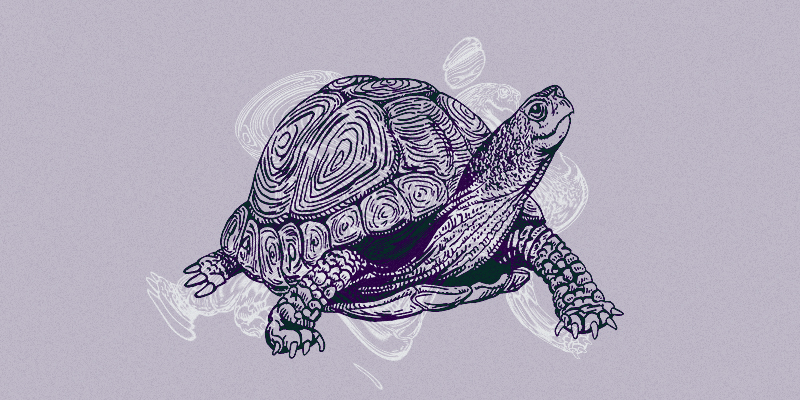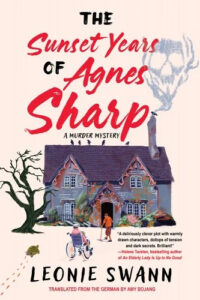The first book I ever got lost in was Sebastian Lybeck’s “Latte and the Magical Waterstone”, a rather obscure Finnish children’s classic. I had borrowed it from the school library, carried it around proudly in my little leather satchel for most of the day, and once I had returned home, promptly disappeared into it all afternoon. When I finally remerged, something in me had changed. I felt happy and bereft at the same time, full of clarity but also a bit dazed. It was my first true reading adventure, and it made me understand what a wondrous thing a story can be.
The hero of the book was a hedgehog, brave and bristly, upright and determined in his quest to reclaim the mysterious waterstone and save the forest from drought. Being a hedgehog was fun. The book had a lot of things I still love in stories: mystery, suspense, friendship and adventure. The fact that the protagonist was only ten inches long and probably infested with fleas didn’t faze me in the slightest.
As children, we seem to morph quite easily, flowing in and out of other minds in a natural, uncomplicated way, and consequently children’s literature is teeming with critters. However, once we grow up, the stream of literary creatures starts to dwindle. They still exist, of course, poured into metaphors, symbols, allegories and portents. Rarely do they get to be themselves. After all, writing and reading is an exclusively human business.
I always felt this is a bit of a shame.
For me, experiencing the world from another vantage point is at the heart of what makes reading such a compelling journey. No other medium allows you to immerse yourself in quite the same way. Squatting in someone else’s mind—if only for the length of a story—is something that fascinates me endlessly. It is exciting. It is fun. It truly broadens your horizon and makes you discover the world from a different angle.
And when you are about to embark on a journey, why not make it an adventure? Why restrict yourself to the well-trodden path of human experience? I at least never lost my weakness for books with an animal angle and always felt exhilarated when I came across a good one: The classic that is “Watership Down”. Bernard Werber’s “Les Fourmis”, a mind-boggling and very clever ant extravaganza. The rather mystical mole saga “Duncton Wood”.
At about the same time I discovered the nostalgic world of the Whodunnit, and Agatha Christie’s trusty mysteries quickly became firm favourites. I liked how they explore the abyss underneath the flowers and chintz, and how they pitch the human mind against a set of riddles. So simple, but so effective. In my exploration of the genre, I stumbled upon Edgar Allan Poe’s short story “The Murders in the Rue Morgue”, mainly because it is generally described as the first example of a classic detective story. It is certainly that, featuring a brilliant investigator, his slightly awed friend and a seemingly impossible set of circumstances.
It is also the first story I came across where (spoiler alert) an animal is the perpetrator. The murders that had been carried out in a locked room with freakish strength turned out to be not the deed of a human criminal but of a terrified and confused orangutan. So, if an animal could be the culprit of a murder mystery, why not make one a detective for good measure? Why not indeed?
Once my interest had been piqued, I quickly found a few compelling examples of the animal murder mystery subset, and a fair number of them featured cats, most mentionable Akif Pirinçci’s “Felidae” and Rita Mae Brown’s Mrs. Murphy Mysteries. Cats are clearly the fictional animal sleuths of choice, and you can see why. They share our spaces and are part of our everyday lives, they often take a dim view of human activity, and they keep their own counsel.
Did I enjoy my first animal sleuthing reads? Absolutely. I loved how they infused the mystery plot with a sense of a double reality, opening up a parallel world trodden by velvety paws and giving the familiar murder mystery genre new color and interest. Still, I could not shake the feeling that some opportunities were missed here: the sleuthing felines might have sported tails and claws, but they weren’t really animals. They had a soft spot for Mahler, worried about their figure and dabbled in genetics—all things I was fairly certain no upstanding feline would ever contemplate. In short: they were humans in disguise.
To be clear: any fictional depiction of animal consciousness will by necessity be anthropomorphized, if only for the fact that it uses words and is aimed at humans. It will always be an attempt at translation, a thought experiment, inviting the readers to suspend their disbelief and push the boundaries of their imagination. But I couldn’t help feeling that those boundaries could have been pushed a little further.
When I wrote my first book, the sheep murder mystery “Three Bags Full”, I knew early on what I wanted: sheep that were convincing investigators—and convincing sheep. While ruminating their shepherd’s sudden and violent departure from the pasture of the living, they should keep their ovine priorities: grass, safety and flocking together. Detective work was always going to be a side hustle.
I thoroughly enjoyed writing from a sheep’s point of view (POV). Once begun it was shockingly—almost embarrassingly— intuitive. (I still have a visceral reaction when I come across a luscious green field of grass.)
However, the biggest surprise for me was how well the sheep POV worked in the context of a murder mystery. For me at least the two turned out to be a natural fit. For one there was no need for trench coats and deerstalkers—my sheep heroes naturally blended into the landscape and were the most inconspicuous investigators I could possibly have wished for.
But the synergies ran a lot deeper than that: the sheep might have suited the mystery story, but the mystery story also suited the sheep.
Almost everybody knows how a murder mystery works. It is a dependable, utterly familiar structure, and this very familiarity allowed me to push the animal POV a little further. The frame of a crime story serves as a reference point that helps to anchor the readers once they find themselves in unchartered creature territory. It is a steadfast setting that makes the initial strangeness of an animal POV more accessible.
The animal gaze also is a way of stepping back a little (or a lot), of observing human ploys and foibles from the vantage point of the ultimate outsider. And after all, isn’t this what every good detective should do? Naturally, this innocent and rather skewed gaze also offers a lot of opportunity for humor—and in my book humor is the perfect counterpoint to suspense. Comic relief—it’s a classic for a reason.
I have now published six novels. Not all of them are exclusively from an animal point of view—in fact, the latest ones seem to feature a rather unnerving number of humans—but each single one of them has an animal angle. After the sheep came fleas, a parrot, a tortoise and a youthful boa constrictor.
In my latest book “The Sunset Years of Agnes Sharp”, Hettie, the trusty household tortoise, plays a small but pivotal role. Hettie is not only an unimpressed and acerbic observer of the elderly protagonists’ struggle to solve a murder while hiding another, she also serves as a projection screen for my plucky investigators’ hopes and dreams, and ultimately becomes a catalyst for the solution to the crime. Her stoic reptilian presence adds another facet to the human tale and encourages the reader to look at the plot—and the world—with fresh eyes.
For me this lies at the core of what reading—and writing—can be: a constant invitation to discover and rediscover the world, to break through set ideas and preconceptions, and ideally tap into a sense of wonder, if only for a sentence or two. It is at this point that animal POV and murder mystery conveniently converge. They both are an invitation: Look closer. Look again. Nothing is quite as it seems.
The world is not discovered yet.
***


















